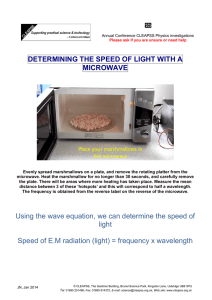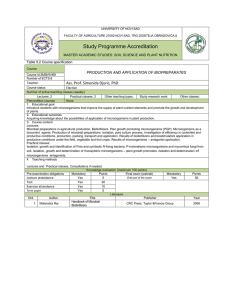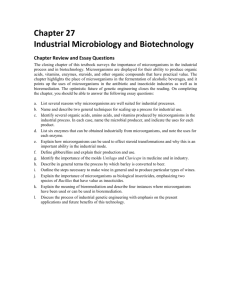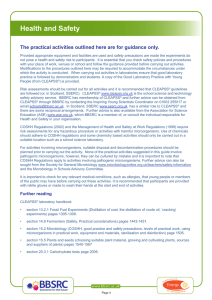Bioreactors and fermenters b STUDENT SAFETY SHEETS
advertisement
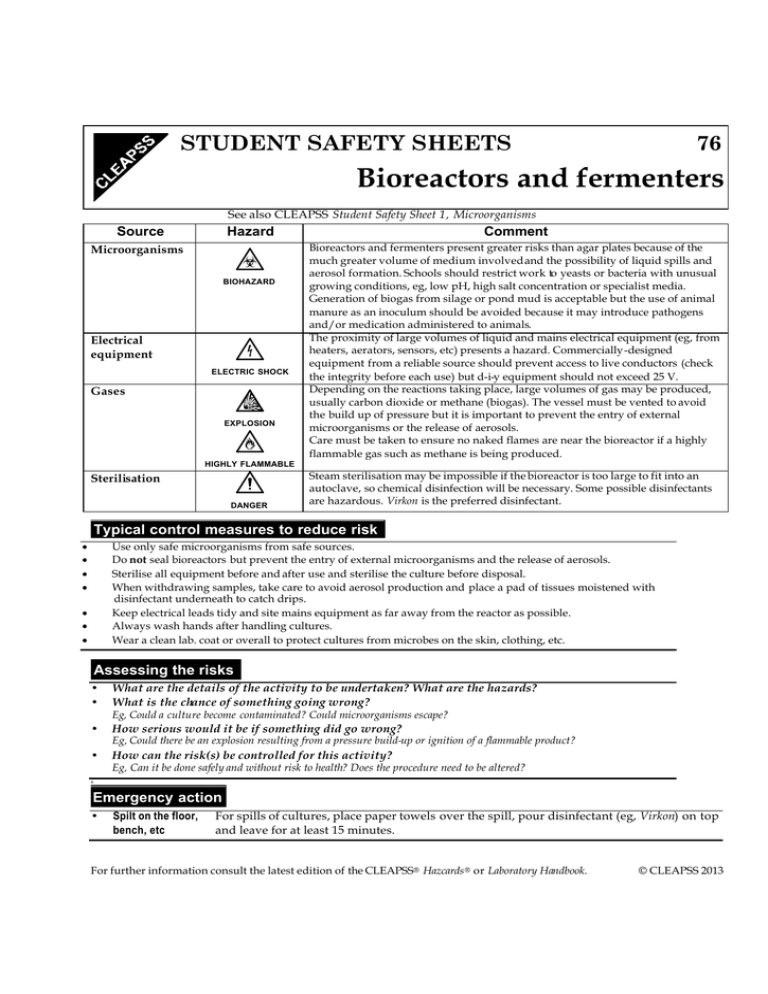
STUDENT SAFETY SHEETS 76 Bioreactors and fermenters See also CLEAPSS Student Safety Sheet 1, Microorganisms Source Hazard Microorganisms b BIOHAZARD Electrical equipment s ELECTRIC SHOCK Gases e EXPLOSION f Comment Bioreactors and fermenters present greater risks than agar plates because of the much greater volume of medium involved and the possibility of liquid spills and aerosol formation. Schools should restrict work to yeasts or bacteria with unusual growing conditions, eg, low pH, high salt concentration or specialist media. Generation of biogas from silage or pond mud is acceptable but the use of animal manure as an inoculum should be avoided because it may introduce pathogens and/or medication administered to animals. The proximity of large volumes of liquid and mains electrical equipment (eg, from heaters, aerators, sensors, etc) presents a hazard. Commercially-designed equipment from a reliable source should prevent access to live conductors (check the integrity before each use) but d-i-y equipment should not exceed 25 V. Depending on the reactions taking place, large volumes of gas may be produced, usually carbon dioxide or methane (biogas). The vessel must be vented to avoid the build up of pressure but it is important to prevent the entry of external microorganisms or the release of aerosols. Care must be taken to ensure no naked flames are near the bioreactor if a highly flammable gas such as methane is being produced. HIGHLY FLAMMABLE ! Sterilisation DANGER Steam sterilisation may be impossible if the bioreactor is too large to fit into an autoclave, so chemical disinfection will be necessary. Some possible disinfectants are hazardous. Virkon is the preferred disinfectant. Typical control measures to reduce risk • • • • Use only safe microorganisms from safe sources. Do not seal bioreactors but prevent the entry of external microorganisms and the release of aerosols. Sterilise all equipment before and after use and sterilise the culture before disposal. When withdrawing samples, take care to avoid aerosol production and place a pad of tissues moistened with disinfectant underneath to catch drips. Keep electrical leads tidy and site mains equipment as far away from the reactor as possible. Always wash hands after handling cultures. Wear a clean lab. coat or overall to protect cultures from microbes on the skin, clothing, etc. • • • Assessing the risks • • What are the details of the activity to be undertaken? What are the hazards? What is the chance of something going wrong? • How serious would it be if something did go wrong? • How can the risk(s) be controlled for this activity? Eg, Could a culture become contaminated? Could microorganisms escape? Eg, Could there be an explosion resulting from a pressure build-up or ignition of a flammable product? Eg, Can it be done safely and without risk to health? Does the procedure need to be altered? 4 Emergency action • Spilt on the floor, bench, etc For spills of cultures, place paper towels over the spill, pour disinfectant (eg, Virkon) on top and leave for at least 15 minutes. For further information consult the latest edition of the CLEAPSS® Hazcards ® or Laboratory Handbook. © CLEAPSS 2013




